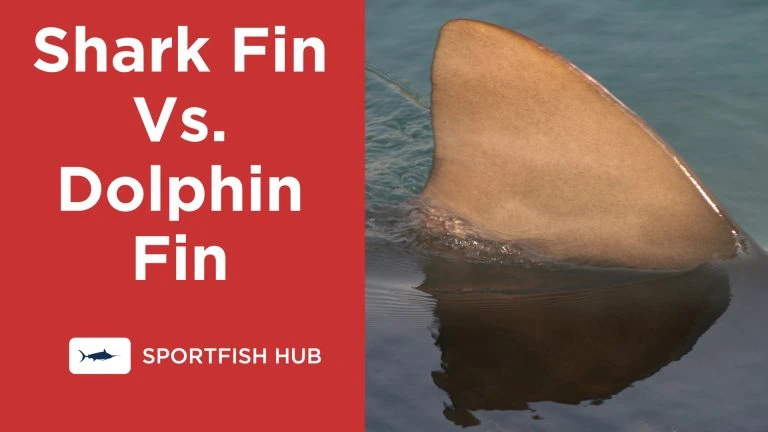Sharks and dolphins are both marine mammals, but their fins have unique anatomical differences that help distinguish them. This guide explains key identification features.
Detailed comparison of differences:
| Feature | Shark Fin | Dolphin Fin |
|---|---|---|
| Fin Spines | Rigid structural spines present made of cartilage | No internal fin spines, flexible throughout |
| Skin Texture | Covered in dermal denticles or placoid scales | Smooth bare skin without scales |
| Tail Movement | Powerful side to side oscillations | Up and down oscillations |
| Fin Position | 2 dorsal fins on back, pectorals on sides, pelvics near rear | Single dorsal fin on back, 2 pectorals on sides |
See also: What Sharks and Dolphins have in common
Fin Identification Tips
- Check for rigid structural fin spines made of cartilage (shark) or flexible fins without internal spines (dolphin)
- Examine skin texture – small tooth-like denticles covering the skin (shark) or smooth, bare skin (dolphin)
- Note tail movement – powerful side-to-side motion for propulsion (shark) compared to up and down oscillation (dolphin)
- Identify fin position and numbers on the body – sharks have 2 dorsal fins, paired pectorals, and pelvics versus dolphins with 1 dorsal fin and 2 pectoral fins located on sides
The easiest of the above identifiers is going to be watching how the tail fin moves. Shark tails swing powerfully from side to side to propel them forward. Dolphin tails move in an up-and-down oscillation.
Anatomy of Shark Fins
Shark fins contain tough cartilage spines that act as structural support elements. These spines are found in the dorsal, pectoral, and pelvic fins. The small placoid scales or denticles covering the skin reduce drag and turbulence, allowing smooth movement through water. Powerful side-to-side oscillations of the caudal fin provide forward propulsion.
Anatomy of Dolphin Fins
Dolphin fins do not contain any rigid fin rays, instead having flexible collagen fibers and connective tissue. The smooth bare skin lacks scales or denticles. Dolphins have just one dorsal fin and two pectoral fins for steering while swimming. Up and down movements of the large tail fluke provide efficient propulsion.
Summary
In summary, analyzing fin anatomy and movement provides clear identification clues to distinguish between shark and dolphin fins.











